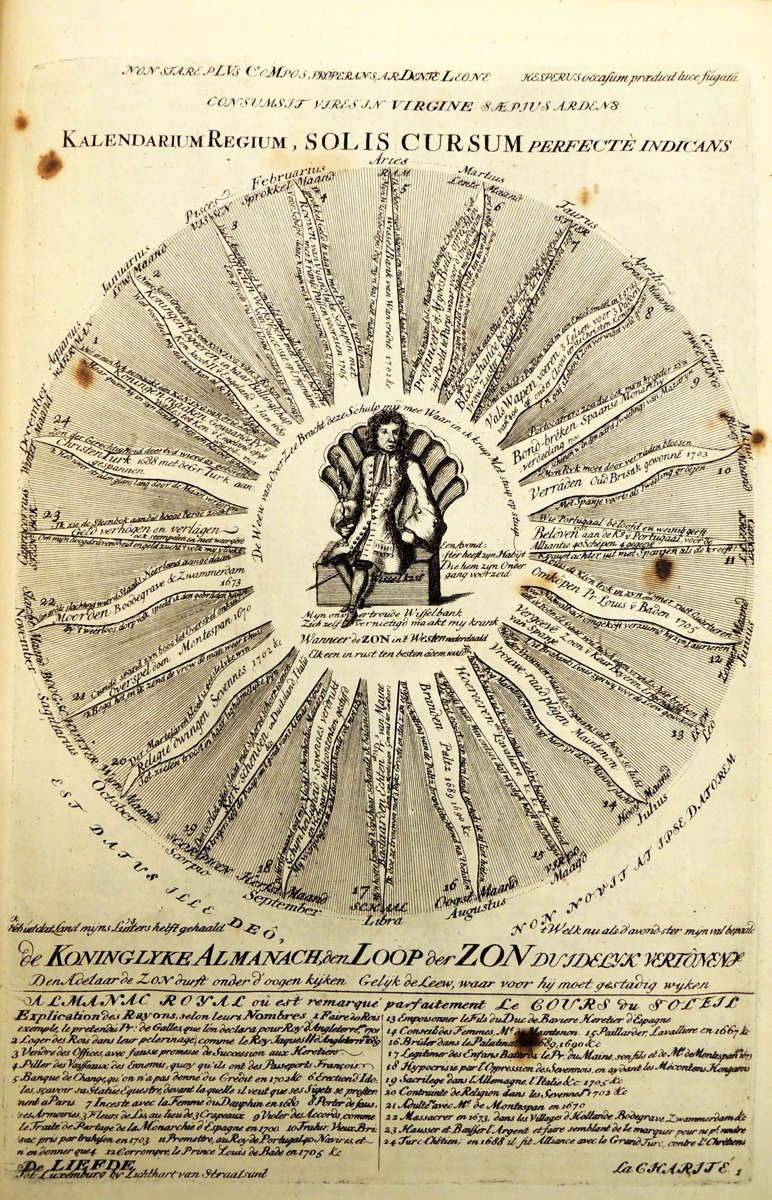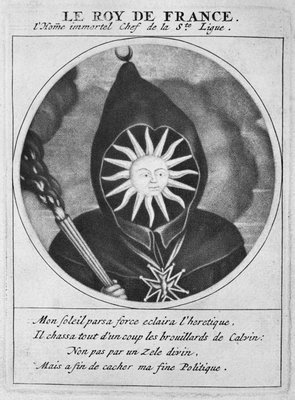Censorship was extremely strict in France during the old regime - particularly so during Louis XIV. Yet, even during the reign of the Sun King, defamatory pamphlets were printed abroad (usually in the Netherlands) and secretly imported. It was especially during the latter part of Louis XIV's reign that the absolute monarch came under increased scrutiny. Following decades of almost unbridled success abroad - both militarily and politically - France suffered several setbacks. This resulted in taunting from foreign powers as well as scathing criticism from within; albeit the latter had to be incredibly cautious since the penalties for lèse-majesté were severe.
Below you will find several of the pamphlets levelled against Louis XIV:
The Netherlands was a hotspot for anti-French sentiments due to the continued assaults on the territories by Louis XIV. During the War of the Spanish Succession (1701-14), a whole miniseries of caricatures were printed in the Netherlands of the French king. The pamphlet below depicts the king at the center of the sun with each ray describing a crime committed by the king - in both French and Dutch. There is some disagreement as to who created the design. Some sources name Carel Allard while others point to Romeyn de Hooghe.

Romeyn de Hoogh was the mind behind the satire below. It is based on the oft-used allegory - which can be found within Versailles itself- of the king in a chariot surrounded by allegorical creatures and symbolism. However, unlike at Versailles, everything here is meant to insult rather than glorify the king. Instead of standing proudly in a warrior-like pose, the aging king is supported by crutches and his chariot itself is falling apart. The woman represents the evening star - and Madame de Maintenon. She is seen as outright directing the king's course towards the ferocious lion and eagle waiting ahead.

The Revocation of the Edict of Nantes (1685) made Louis XIV an easy target for outside critique - especially from Protestant countries as well as Anglican England. The hooded figure below depicts the king - represented by this signature sun emblem - with the sinister poem beneath:
"My sun shines brightly on the heretic; it chases away the mists of Calvin; not from a divine zeal; but for my fine politics to conceal".
The authors were Cornelius Dusart and the publisher was Jacob Gole; the former was a Dutchman while the latter was the son of a Huguenot who had had to flee France during the persecution of the Protestants that followed the ever-increasing hostility issued from Versailles.

The solar eclipse of 12 May 1706 was irresistible to Dutch engravers who saw the multitude of prints that could be made from the symbolism of the king's personal emblem, the sun. Again, Madame de Maintenon is featured - this time accompanied by Philip V of Spain (grandson of Louis XIV) - in a "conference" with the Sun King. The newly crowned king of Spain is begging his grandfather to let him return to France because the Spaniards are "wicked". He is apparently refused with the point of a hand above with "a multitude of miseries" is written.

The engraving beneath shows the king in a far more modest métier than what he usually was depicted in. Louis is depicted as the town-crier of Versailles, equipped with a bell and a dog. Behind him the battle of La Hogue. The list in his hand contains the names of the ships he lost during that particular naval engagement and which he now offered a reward for.

The king's private retreat of the Grand Trianon was mocked as being a den of scandal and the even more dreaded woe - female influence. In this Dutch engraving, a beleaguered Louis XIV is physically crushed by his mistresses while his male courtiers look on in astonishment. Meanwhile, the symbols of his absolute power has either fallen to the ground (the scepter) or is being used to further press him down. All three of his primary mistresses are represented: Madame de La Vallière, Madame de Montespan and Madame de Maintenon.
What is interesting from the caricatures above is that only the last one directly attacks Louis XIV's private life and his character. The vast majority of the focus is on politics - especially territorial disputes and downright war - which is hardly surprising considering that they were created by nationals of countries which the king had waged war on. As for the king's character, he is referred to as a man from whom flows a "multitude of miseries" and who is controlled by women. The latter, particularly, was seen as demeaning in the 17th and 18th centuries.
Yet, it is worth noticing that the king's person is otherwise left alone. His successors were subjected to far more openly lewd caricatures which more often than not directly attacks the physical appearance of the subject or perceived (or real) flaws.

No comments:
Post a Comment